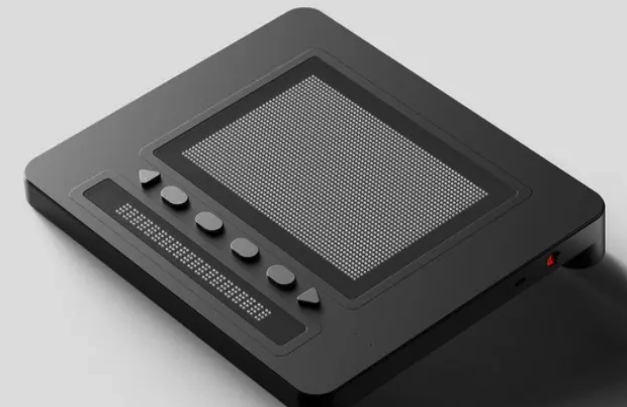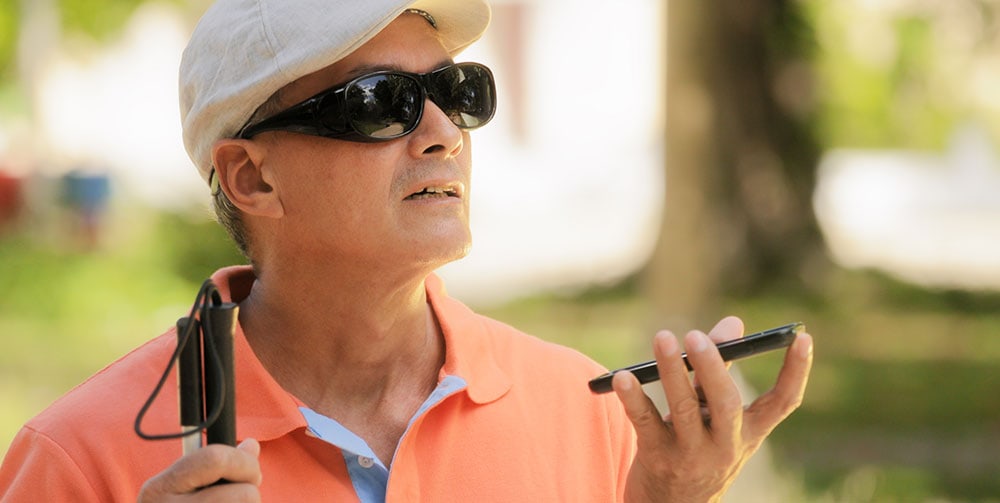Explore High-Tech Glasses for the Visually Impaired and Their Benefits
Explore High-Tech Glasses for the Visually Impaired and Their Benefits
Blog Article
Empowering Independence With Assistive Innovation for the Blind
The combination of assistive technology into the lives of people with visual impairments stands for a substantial innovation in promoting freedom and self-sufficiency. From cutting-edge display visitors to advanced clever walking sticks, these tools not only boost daily navigation and communication but additionally equip individuals to engage meaningfully in different facets of life. As we discover the myriad benefits and real-world applications of these technologies, it ends up being crucial to check out the underlying elements that contribute to their performance and the possibility for future advancements in this essential area.
Summary of Assistive Modern Technology

The growth of assistive technology is based in principles of inclusivity and empowerment. Developments in software program, hardware, and sensory improvements give customers with choices customized to their particular demands. From display readers that transform message to speech, to tactile tools that communicate information through touch, these tools transform the method people engage with their surroundings.
In enhancement to sensible applications, assistive modern technology fosters greater social incorporation and participation in different industries, consisting of education and work (Assistive technology for the blind). As study and growth remain to evolve, the potential for assistive innovation to even more improve the lives of aesthetically impaired individuals continues to be appealing, leading the way for a much more equitable society where every person can thrive
Sorts Of Assistive Tools
A range of assistive gadgets have arised to sustain individuals with visual disabilities, each designed to meet details demands and boost everyday functioning. These tools range from low-tech services to modern developments, offering varied alternatives for individuals.
Low-tech tools consist of magnifiers and large-print materials that aid in analysis and writing. Braille devices, such as Braille slates and stylus pens, make it possible for responsive reading and communication. Positioning and movement aids, like white canes, help users navigate their setting safely.
On the higher end of the spectrum, digital magnifying systems and display viewers supply substantial support. Electronic magnifiers allow individuals to increase the size of text and photos on screens, while display visitors transform electronic content into manufactured speech, assisting in accessibility to info on smartphones and computers.
Mobile phone applications likewise play a critical duty, providing attributes like text recognition and navigation support. Wearable modern technology, such as smart glasses geared up with increased truth, is becoming an appealing device to boost situational recognition.
Advantages of Assistive Technology
The assimilation of assistive innovation substantially enhances the lifestyle for individuals with aesthetic impairments. These technologies empower individuals by advertising freedom, allowing them to browse their atmospheres better and carry out everyday tasks with better ease. Display visitors and zoom software program enable people to access electronic info, fostering educational and expert chances that might have previously been out of reach.
Furthermore, assistive devices such as clever canes and general practitioners applications give real-time navigating help, boosting flexibility and security. This raised autonomy not just improves self-worth but also motivates social involvement, permitting customers to participate even more totally in their areas.
Assistive innovation likewise facilitates interaction, helping customers get in touch with others via voice acknowledgment and text-to-speech applications. This capability is crucial for maintaining relationships and accessing vital info.
Additionally, the modification alternatives available with numerous assistive technologies ensure that users can customize tools to their specific needs, additionally improving functionality and efficiency. In general, the benefits of assistive innovation for individuals with aesthetic impairments are profound, advertising an extra comprehensive culture where everyone can seek their ambitions and objectives.
Study and Success Stories
Highlighting the transformative impact of assistive innovation, various study show how individuals with aesthetic disabilities have actually successfully incorporated these devices right into their day-to-days live. One compelling example includes an university student who made use of display reading software application to browse scholastic products and online resources effectively. This technology not just facilitated her education yet also enhanced her confidence in joining discussions and group jobs.
One more study features a professional who uses a smartphone application made for navigation and object recognition. By utilizing this application, he has actually regained autonomy in both his personal and workplace, permitting him to commute individually and engage with coworkers more successfully.
Furthermore, a senior citizen shared her experience with braille e-readers, which allowed her to access a vast variety of literature and stay linked with her neighborhood with publication clubs.
These success stories highlight the critical function of assistive innovation in cultivating freedom, enhancing high quality of life, and advertising social combination for people with aesthetic impairments (Assistive technology for the blind). By embracing these ingenious tools, individuals can conquer challenges and take chances that contribute to their specialist and individual fulfillment
%20(1).webp)
Future Patterns in Assistive Modern Technology
Technology in assistive innovation is poised to redefine the landscape of support for people with aesthetic impairments. Emerging trends highlight the combination of expert system (AI) and artificial intelligence, which enhance the capability of gadgets that help with navigation and information availability. For example, AI-driven applications are currently capable about his of interpreting aesthetic information in real-time, allowing customers to engage with their setting more independently.
Additionally, the advancement of wearable innovation is advancing rapidly. Smart useful content glasses equipped with augmented reality (AR) can give audio descriptions of environments, changing just how customers engage with public areas. These tools not only promote autonomy yet likewise foster social incorporation.
Additionally, the Net of Points (IoT) is making homes smarter, enabling smooth connection in between day-to-day devices and assistive tools. This connection equips customers by allowing voice-activated controls and automatic actions tailored to specific requirements.
Final Thought
In verdict, assistive modern technology plays a critical role in empowering people with visual problems by enhancing their freedom and interaction with their environments. The diverse variety of applications and tools available not just assists in navigating and interaction but additionally advertises social assimilation and opportunities for personal and expert growth. As innovations proceed in this area, the capacity for enhancing the lifestyle for those with visual problems will expand, cultivating greater freedom and empowerment.

Report this page